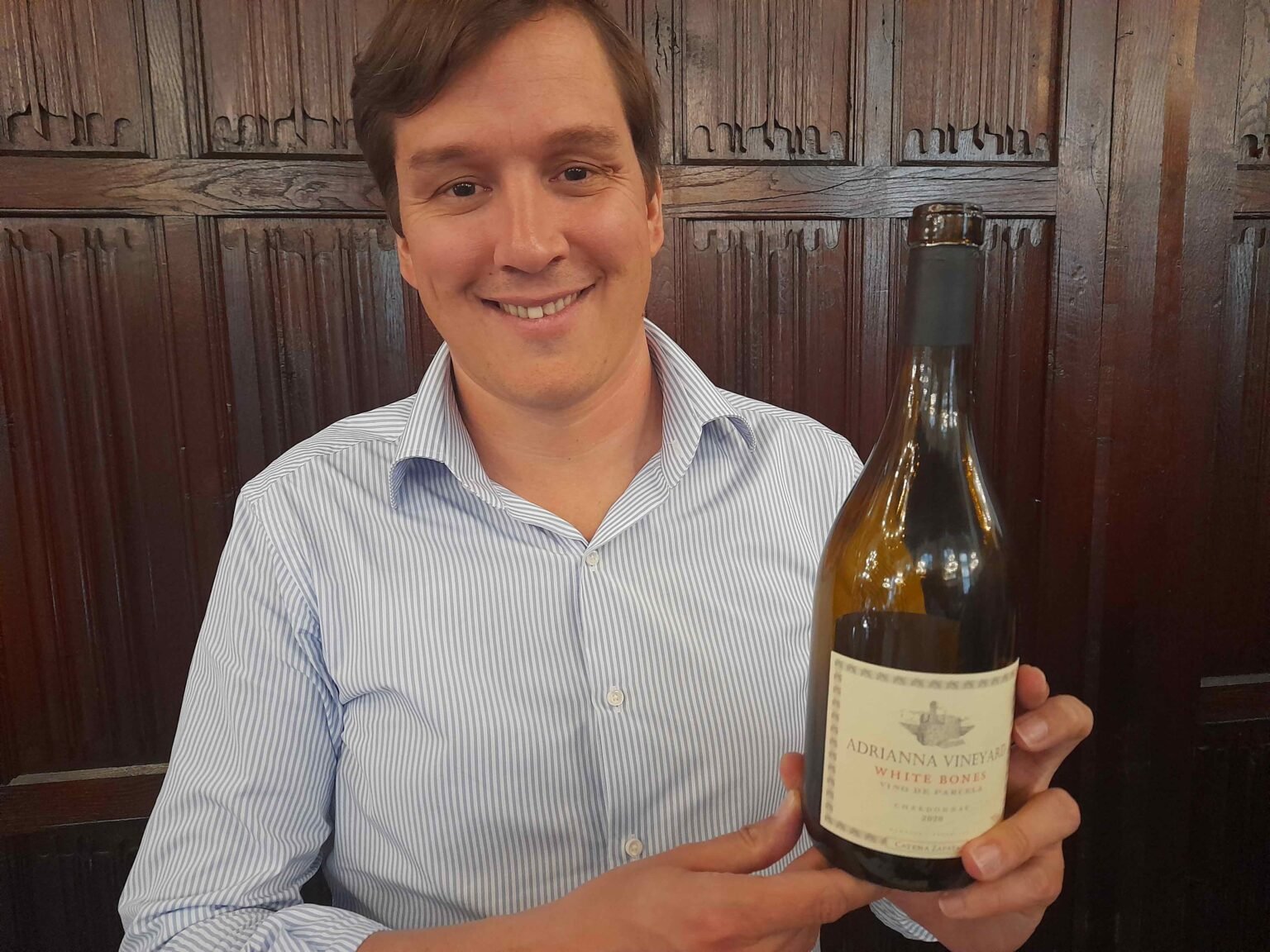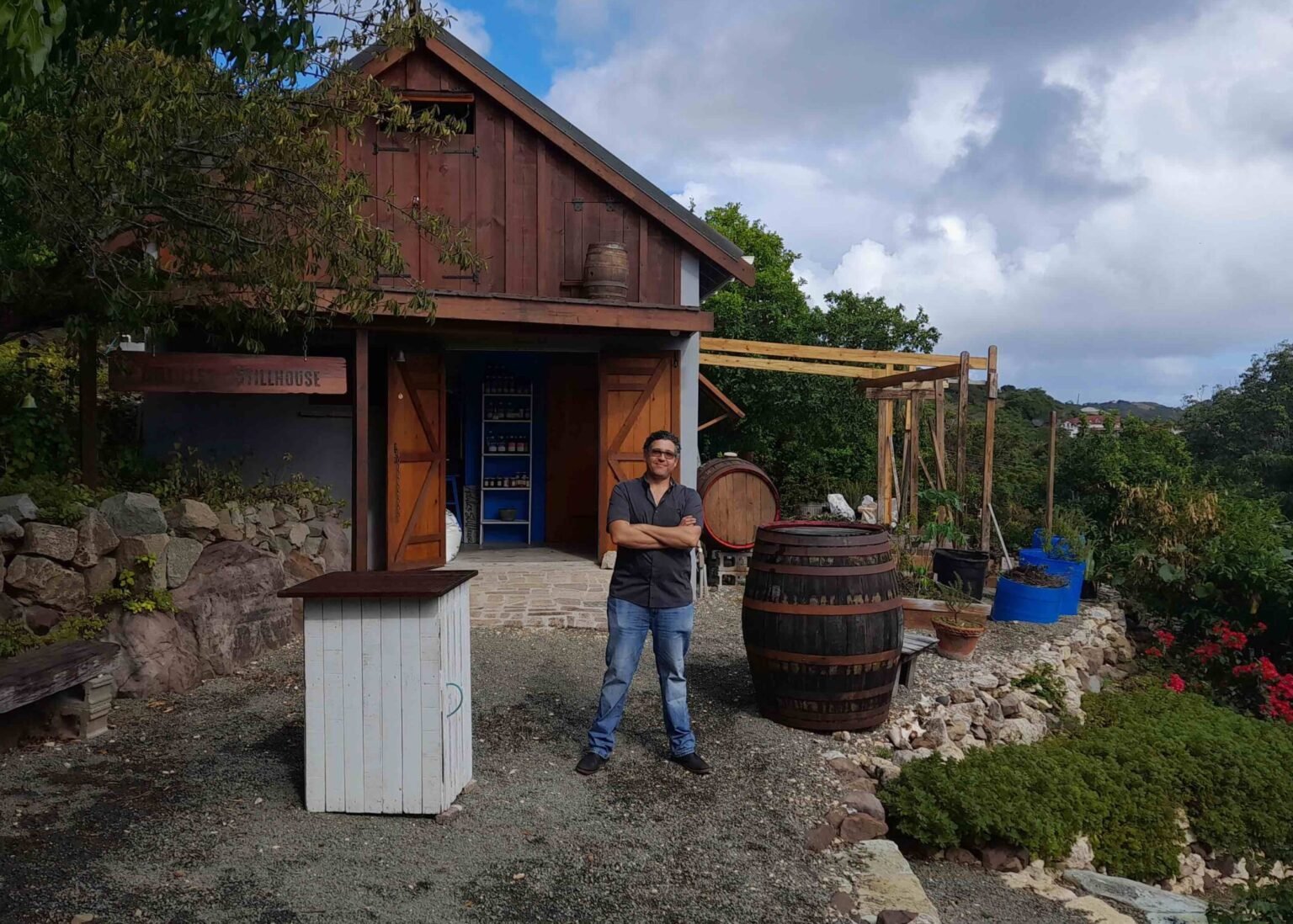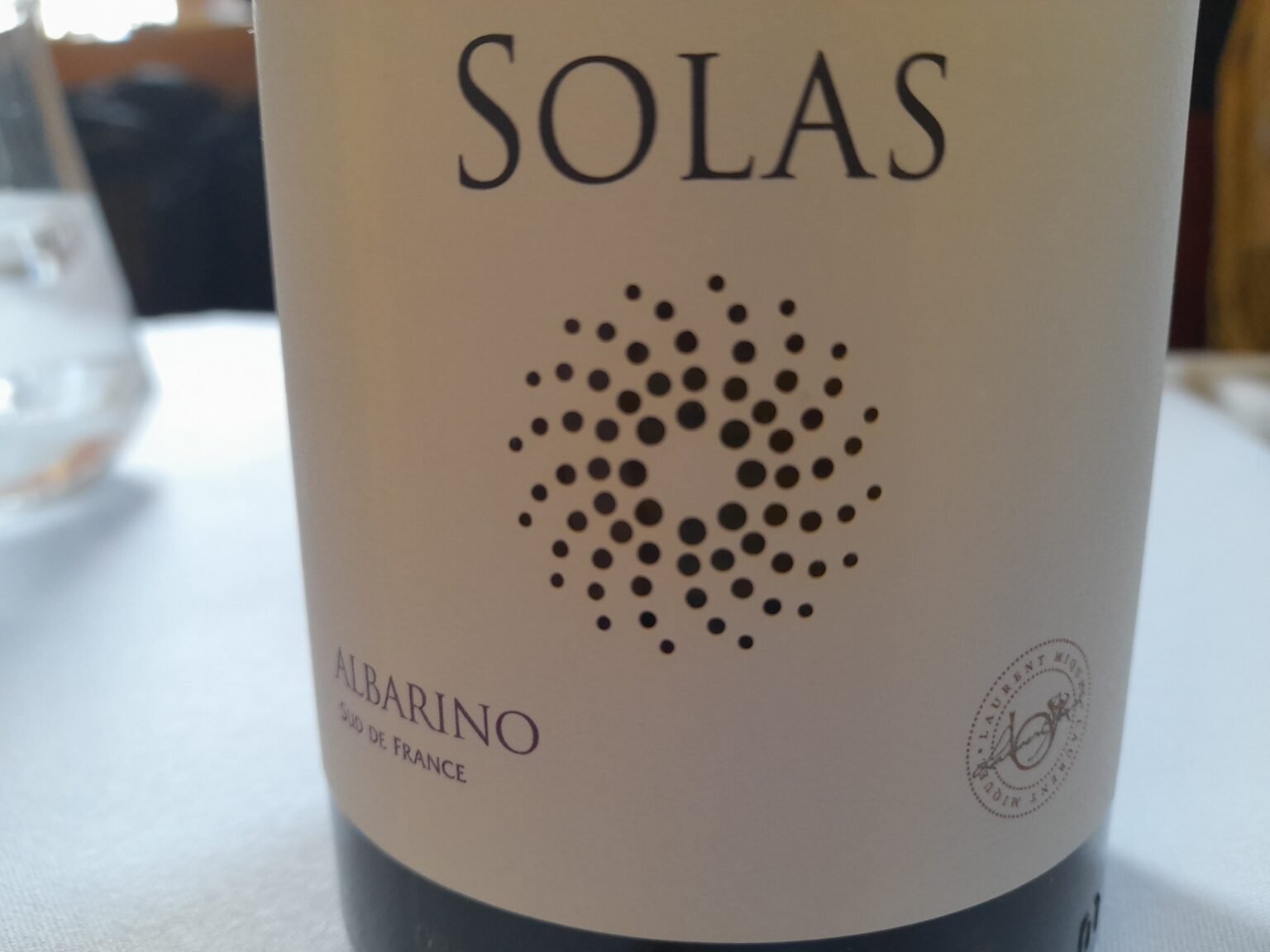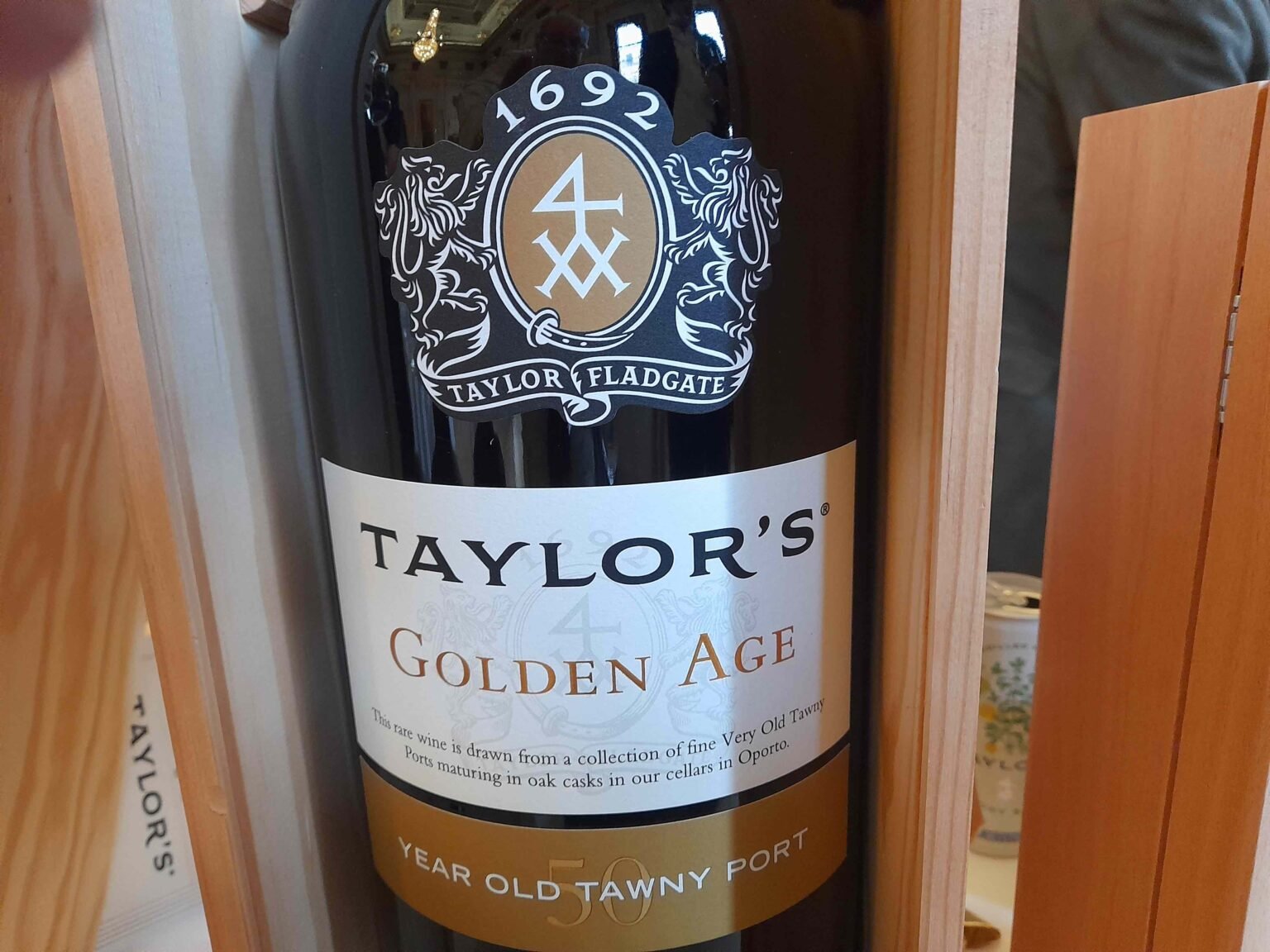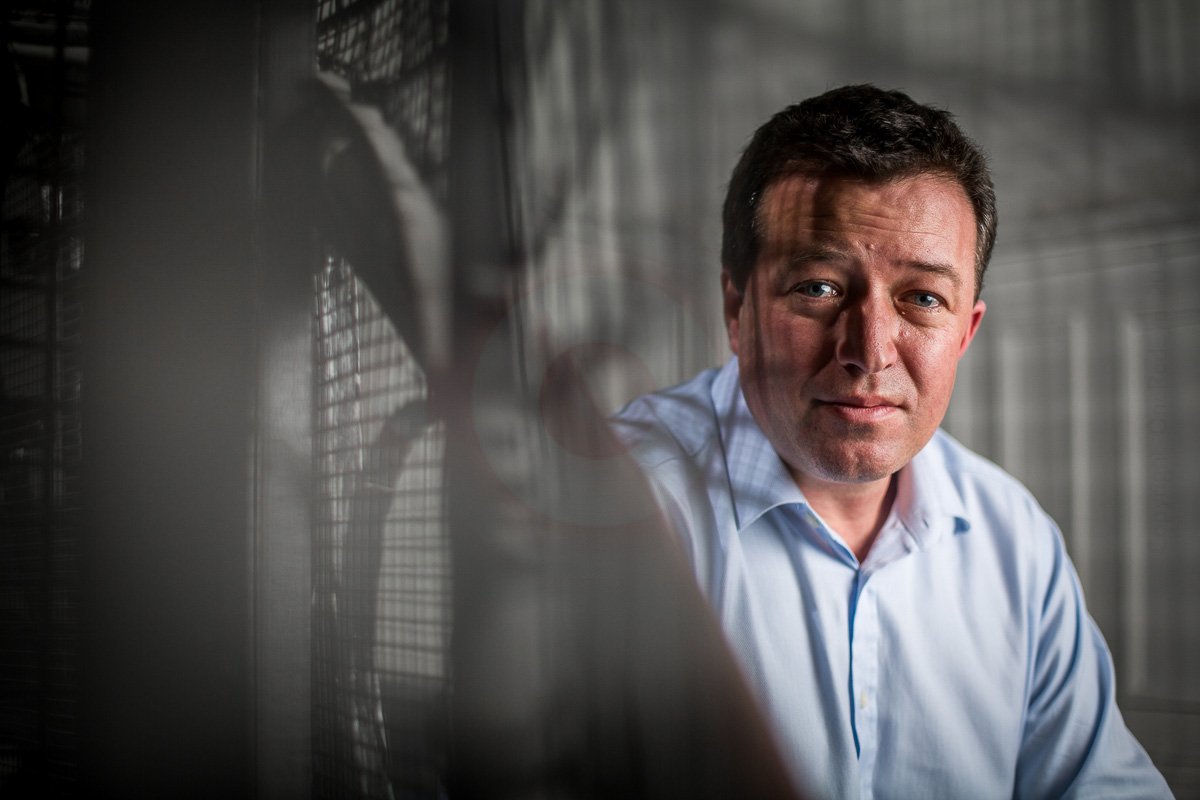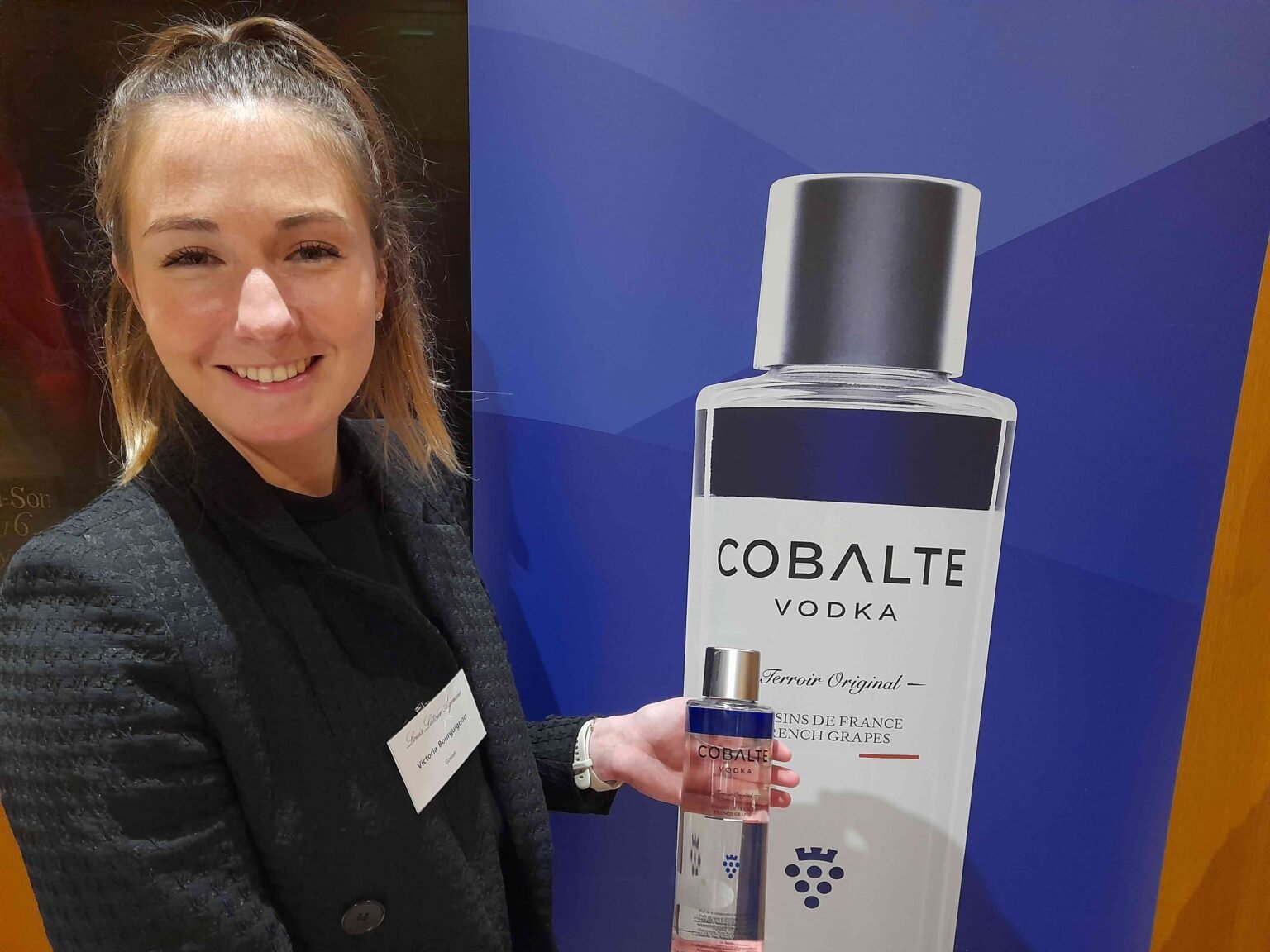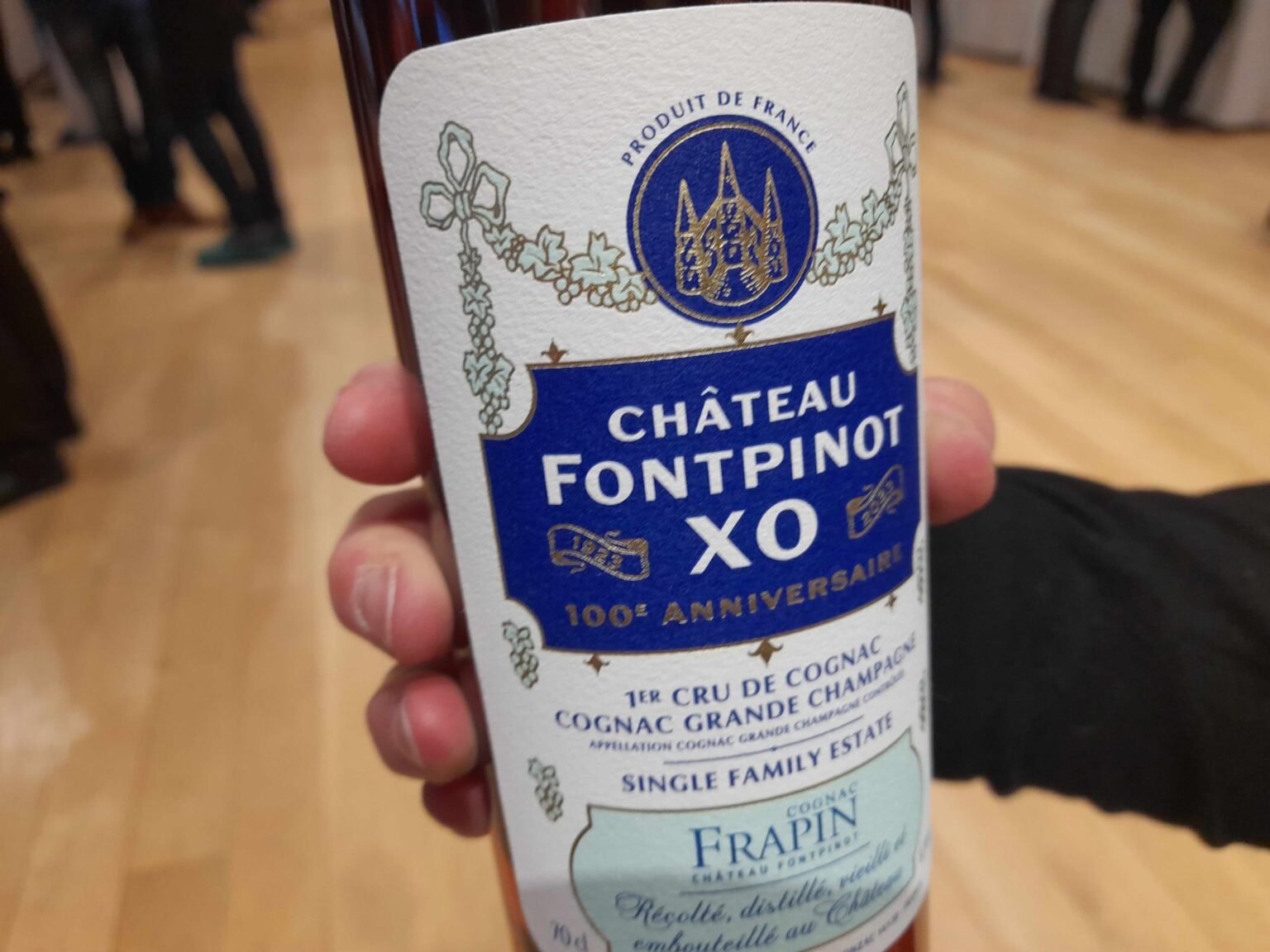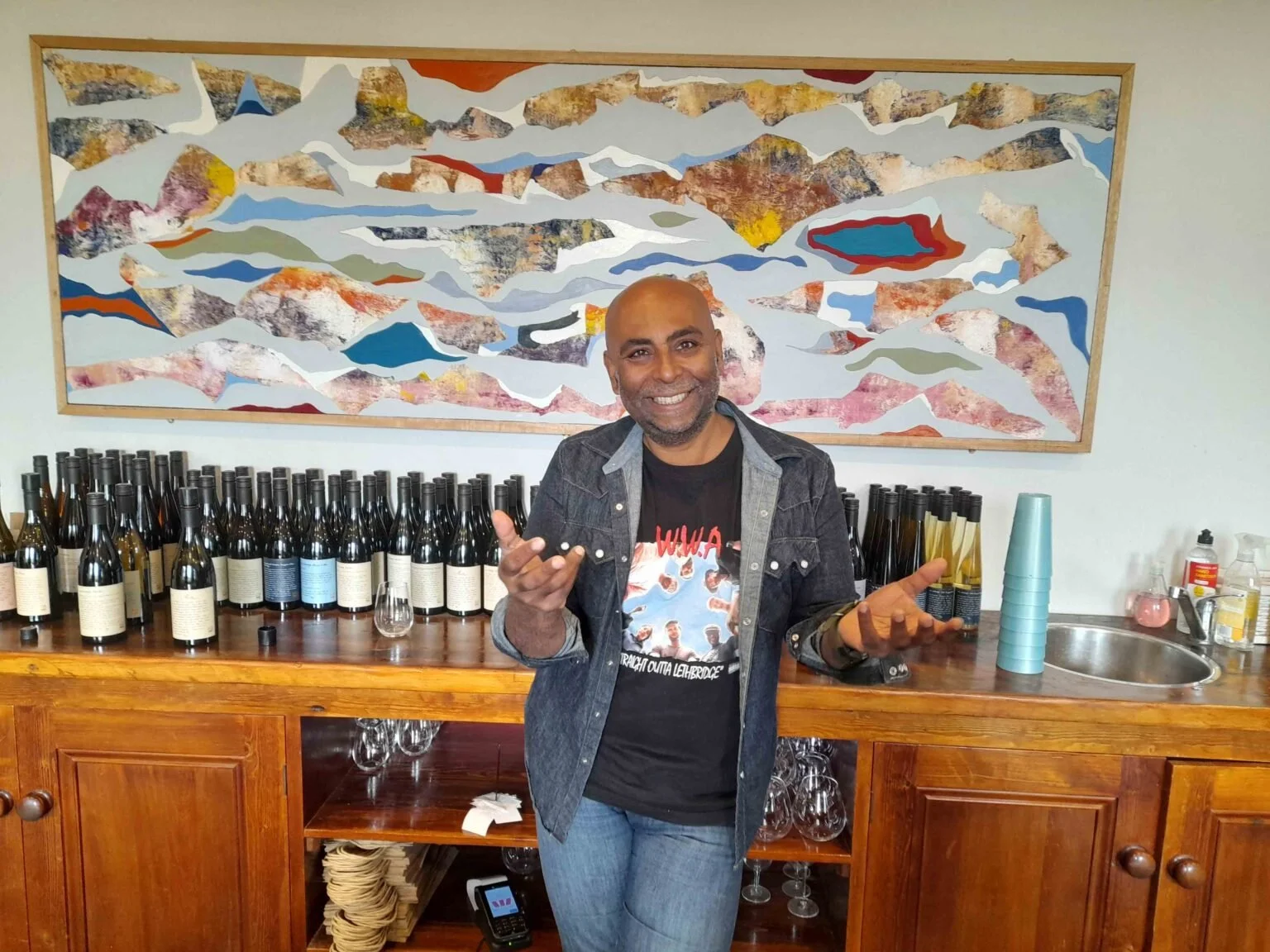How Australia’s Mayfield Vineyard is scaling new heights
Mayfield Vineyard is starting to make waves both in its New South Wales hometown of Orange and here in the UK – impressive given that it’s only been in its current operation for two years. In a flying visit to London, Mayfield’s general manager and partner, Charles Simons explains the strategy of being a young estate in a crowded market, what he learned under the tutelage of Oz winemaking legend Philip Shaw, and how a new device in the vineyards called BioScout gives his team all the information it needs to keep passes amongst the vines to near zero. Geoffrey Dean met up with him and tasted the three Mayfield wines currently available in this country.
By Geoffrey DeanJune 15, 2023
“We want people to drink it and say, ‘Wow.’ If I can put a wine next to Philip Shaw’s, and people can see the similarity, I’ll be happy,” says Mayfield viticulturist Charles Simons.
Mayfield Vineyard’s Charles Simons showing the new vintages
Charles Simons is one of those viticulturists whose experience working around the world seems to have been boundless. After studying oenology in Stellenbosch at the end of the last millennium, he has applied his viticultural skills in the United States, New Zealand, Germany and Australia, working for some renowned producers. It is in the latter country that this flying vineyard manager has finally settled, becoming a co-owner of a winery named Mayfield Vineyard in a wine region of enormous potential in Orange.
The New South Wales market town, which nestles a three-hour drive west of Sydney, is home to the highest vineyards in Australia and the widest diurnal range in that vast country. Most are between 700 and 1,000 metres above sea level, and it is this altitude that underpins the region’s cool climate status.
Orange is increasingly being seen as a prime site for growing Sauvignon Blanc
Sauvignon Blanc, Riesling, Chardonnay and Pinot Noir excel, retaining their acidity in the fresh nights of the growing season to produce wines – both still and sparkling – of shrill acidity. That is a hallmark of Mayfield Vineyard labels, three of which are imported into the UK by Enotria&Coe – the ‘Backyard’ Riesling 2022, ‘Sophie’s Godmother’ Sauvignon Blanc 2022 and ‘Eighteen Fifteen’ Chardonnay 2022.
That is some achievement given that the Mayfield Vineyard brand was only started two years ago when the estate’s new owner, John Eastham, asked Simons to come on board as a shareholder and general manager. Simons jumped at the opportunity, knowing the potential of the region by dint of his time working there as a viticulturist for one of Australia’s most celebrated winemakers, Philip Shaw.
“Philip is the godfather of Australian wine,” Simons declared during a visit to London. “He put Aussie Chardonnay on the world map, and for me to have worked for, and learnt from, him is special.”
Shaw’s legendary attention to detail is shared by Simons.
“I continue to strive every vintage to grow better grapes from our sites,” Simons added. “Crop load is kept low to increase flavour profile. Canopy management is very important to me, and therefore shoot thinning is done pre-flowering to allow greater air movement during this critical stage. Leaf plucking is done after to help with disease control.”
The appliance of science
The revolutionary kit that is helping Simons do “the right thing once… at the right time.”
The desire to limit disease led Simons to help develop a practice known as BioScout, a device the size of ‘a suitcase’ that sits in the vineyards, taking air samples every 30 minutes.
“These are analysed through a microscopic lens, and sent to a computer in Sydney, giving me an idea of what downy mildew, powdery mildew and botrytis spores are in the air,” he said. “So I get a ten-day warning before initial infection, and can base my spraying regime and canopy management on real-time data. This info is geo-tagged, and weather data is also collected – temperature, humidity, moisture, wind speed and direction – to locate the disease hotspot area and determine if it’s a serious threat or not. This has changed the way I look at vineyards… completely.”
BioScout ties in with Simons’ embrace of sustainability, and his aim to minimise tractor passes and, with it, soil compaction.
“The ethos of the viticulturist is that the more footsteps, as opposed to tractor tracks, in the vineyard, the better,” he continued. “Some of our premium vines will be touched by a human five to six times a year. We aim to do the right thing once, at the right time. Technology helps us achieve this but, ultimately, it’s about the pairing of it with an experienced viticulturist.”
Cutting the cloth to fit
Mayfield has 30 of its 91 hectares under vine, of which a third are Chardonnay and a third Pinot Noir, with the balance split between Sauvignon Blanc, Riesling and Cabernet Franc. Around two thirds of the grapes are sold to producers locally.
“If we vinified them all, I’d have a warehouse full of wine and no market. It gives us good cash flow, but we can make more if Enotria say that they want more of whichever varietal next year. We’re looking to go to the US with a new market push, but the UK will always be the number one export market for me.”
The vines were planted in 1999 by the property’s previous owners. Simons planted some more in 2022, including four new clones of Pinot Noir to supplement the original 777. The wines from 2022 were made at the nearby Printhie winery by their winemaker, Drew Tucknell, as Mayfield does not have any vinification facilities.
Simons, who previously worked as Printhie’s viticulturist, is keen to give Mayfield a potential point of difference while accepting the importance of Orange as a wine region of growing repute.
“We don’t want to be mainstream Orange – we want to be unique with our side of town and make wines that start a discussion,” he mused. “We want people to drink it and say, ‘Wow.’ If I can put a wine next to Philip Shaw’s, and people can see the similarity, I’ll be happy but we can’t make better wines than him. Our vineyards are unique as our rich loam and basalt soils are older than Philip’s as they didn’t get the last volcanic eruption there. We add our bit of nuance and flavour but I need to champion the region – I am nothing without the other winemakers, a lot of whom have been there for many years.”
So how were the new vintage wines tasting?
Mayfield Vineyard Estate ‘Sophie’s Godmother’ Sauvignon Blanc, 2022: appealing herbal aromas, and very pretty fruit with passion fruit and pineapple notes, as well as lemon pith and asparagus. Zesty acidity with real freshness and purity.
Mayfield Vineyard Estate ‘Backyard’ Riesling, 2022: Simons, who worked in Pfalz in Germany, says he loves that style of Riesling and has tried to create something similar here. Fermented with wild yeasts in stainless steel, it spent a month on the lees, softening texture. 5g/l of residual sugar is well-judged, balancing racy acidity (TA 7.5g/l) of grapes grown at 924 metres. Limey citrus notes on the palate with lemon-sherbet aromas.
Mayfield Vineyard Estate ‘Eighteen Fifteen’ Chardonnay, 2022: named after the year the Mayfield property was given to an explorer named William Wentworth, this is clone 95. Melon, peach and grapefruit notes with a smidge of citrus. Edgy acidity and minerality, with complexity coming from the use of wild yeasts and a creamy texture from 75% malolactic fermentation. Spice and biscuity hints from 27% new oak.
Mayfield Vineyard Premier ‘Block 14’ Chardonnay, 2022: two-acre single vineyard site on quartz soil. Barrel-fermented, and aged in new and older French puncheons, hogsheads and barriques. 50% malolactic fermentation. Pale lemon hue with vivid acidity and flinty minerality. Notes of stone fruit and pink grapefruit as well as hints of roasted cashews and almonds. Good concentration and a long finish. A ripper of an Aussie Chardy.
Mayfield Vineyard Premier ‘William’ Pinot Noir, 2022: a reserve release from the best 13 rows of block 10 (900m). Named, in the words of principal owner, John Eastham, “in gratitude to three Williams who had a profound impact on our region, Mayfield and me.” The first was Wentworth, who was granted the land in 1815 for being among the first Europeans to cross the Blue Mountains; the second was William Tom, a subsequent owner who planted the first vines on the property in the 1850s; the third was William Quick, Eastham’s father-in-law. Light in colour and body (13.5% abv), with an alluring floral fragrance and crisp acidity. Raspberry, cherry and blueberry notes, with hints of spice. Chalky tannins and some structure from 25% new oak for 11 months. A very appealing Pinot with the capacity to age.
The wines of Mayfield Vineyard are imported and sold in the UK by Enotria&Coe, which is a commercial partner of The Buyer.







